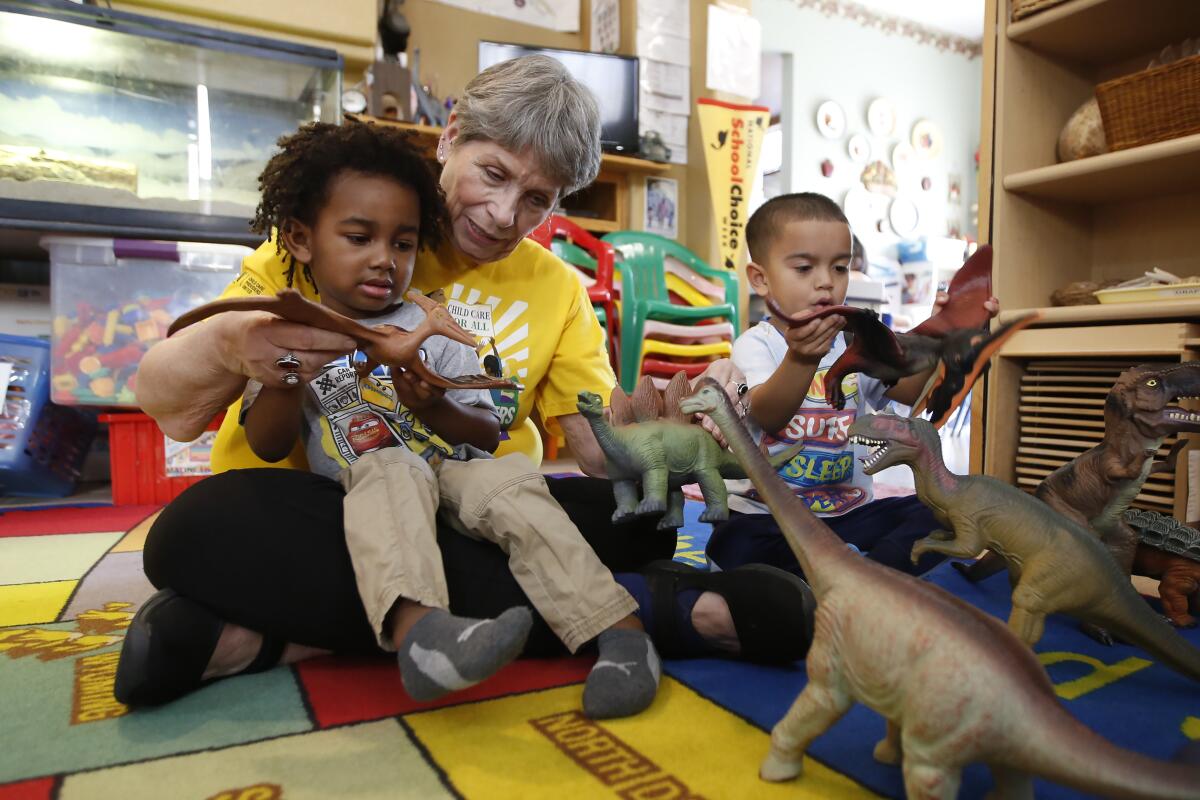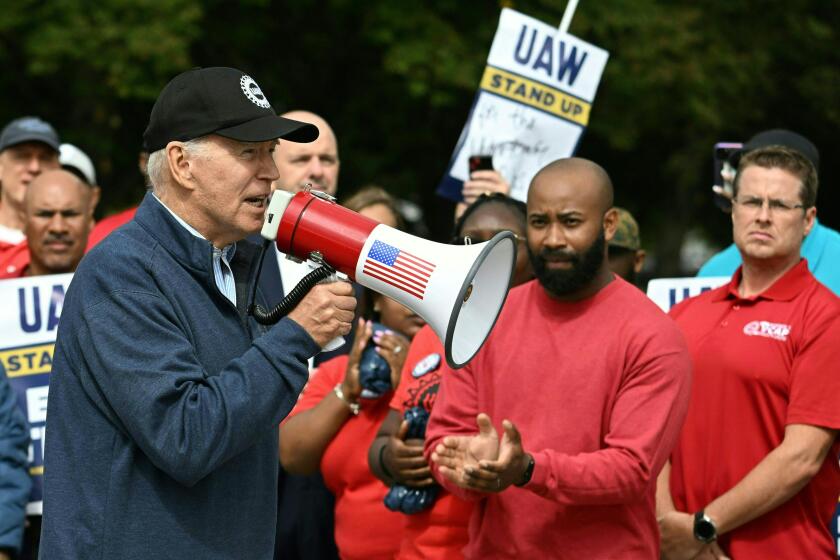Column: U.S. policy basically discourages having kids. Now our economy is paying the price

- Share via
The largest healthcare strike in U.S. history was called off Thursday as Kaiser Permanente and unions representing 75,000 workers finally reached a tentative agreement. This after a planned three-day work stoppage by the unions gave their employer a preview of what would have been ahead if an impasse continued. Kaiser clearly wasn’t interested in seeing more.
Opinion Columnist
LZ Granderson
LZ Granderson writes about culture, politics, sports and navigating life in America.
It’s good news for America’s workers, who were quick to feel the pinch from record-high inflation but slow to reap the benefits of the record profits that came with it. Since last August we’ve seen 42 work stoppages of at least 1,000 employees across the country, according to the Bureau of Labor Statistics. There’s a theme here, as workers have been squeezed too hard for too long — as if the corporate brain trust thought “The Hunger Games” were a how-to manual.
It’s not just that wages have been slow to rise, and it’s not just that housing and food cost increases have outpaced inflation. Look at the barriers we’ve created to adequate child care.
The wave of migrants could create opportunities for terrorists, and U.S. intelligence on such threats is clearly far from perfect.
As of the end of last month, states are coping with the loss of $39 billion in federal funding for child care, a financial catastrophe that threatens the solvency of 70,000 programs, employment for more than 200,000 workers and the care for more than 3 million children.
“There was a child-care crisis even before the pandemic,” Sen. Patty Murray (D-Wash.) said. Last month she and other Senate Democrats introduced a bill to try to soften the blow of losing this aid. “This is an urgent economic priority at every level: Child care is what allows parents to go to work, businesses to hire workers, and it’s an investment in our kids’ futures. The child-care industry holds up every sector of our economy.”
Senate Democrats have endured decades of one-person obstruction through filibuster threats, not unlike how Kevin McCarthy was dethroned.
Before the pandemic, the Department of Health and Human Services reported that what families spent on child care was roughly 40% higher than what was considered affordable. Combine that with the fact that this year’s average wage increases trail last year’s pace. And the fact that the gap in buying power caused by record inflation is forecast to last until late 2024.
What exactly are working parents supposed to do?
While many white-collar industries offer child-care options, the fastest-growing job sector — leisure and hospitality — isn’t exactly a leader in this area. In Germany, municipalities are required by law to provide child care. In America, we’re less accommodating. Sort of a “don’t have children unless you can afford them” attitude.
Biden is siding with labor against capital. Trump is posing as a culture warrior to woo working-class white voters.
The thing is, we’re running out of people who can afford to raise kids without assistance.
September marked the 33rd consecutive month in which the U.S. economy added jobs. The labor-market participation rate is up, and there are more than 9 million job openings across the country. This is all great news — unless you need child care. Then you have to figure out whether any of the jobs available to you would pay more than you’d be spending on child care, assuming you’re not among the 50% of Americans who live in so-called child-care deserts — the areas in America where pre-K bodies outnumber available spots.
“It’s a nonstop financial and logistical burden for the whole family,” Murray said.
Take your pick — Medicaid, welfare, Social Security — conservatives have historically spoken about entitlements and safety nets as if those who would benefit are lazy and not part of the workforce. The reality of just how inaccurate that assessment is about to smack them in the face because of the connection between labor and child care.
These folks would rather cut government programs than finance social services, but here’s the rub: If would-be workers can’t afford to work, how exactly is austerity going to address the issue?
When we talk of the work ethic of the “greatest generation,” we often skip over the part where the federal government came in and subsidized child care — built centers and everything. Without that assistance, most of the 6 million women who kept this country going during World War II wouldn’t have been able to enter the work force.
On Saturday, $39 billion in federal child-care funds will expire, which could cause 3.2 million children to lose their spots in early education programs. The U.S. needs ways to address this crisis.
By contrast, today, 68% of Oklahomans live in a child-care desert. The state is also estimated to be 40,000 workers short. Do you think that’s a coincidence?
The proliferation of the gig economy, in combination with passage of the Affordable Care Act, has worked to create a pathway where more Americans are able to walk away from toxic work environments and be their own bosses. The Great Resignation and the wave of labor strikes further highlight the shift in the relationship between labor and capital. Yet as seismic as those changes are, the most significant earthquake is yet to come. Paid family leave and affordable child care are no longer just items on liberals’ wish list.
Like the rest of the industrialized world, America is coming to grips with the fact that if you want people to work, that idea has to work for their children too.
- Share via
Watch L.A. Times Today at 7 p.m. on Spectrum News 1 on Channel 1 or live stream on the Spectrum News App. Palos Verdes Peninsula and Orange County viewers can watch on Cox Systems on channel 99.
More to Read
A cure for the common opinion
Get thought-provoking perspectives with our weekly newsletter.
You may occasionally receive promotional content from the Los Angeles Times.

















